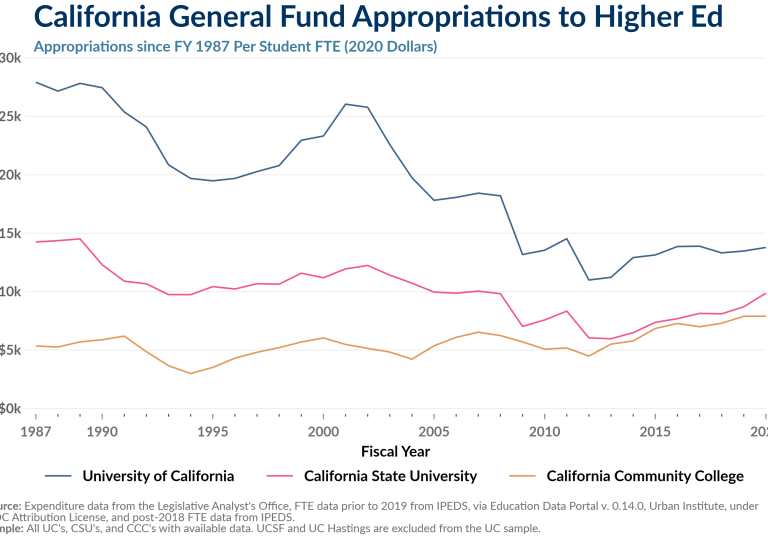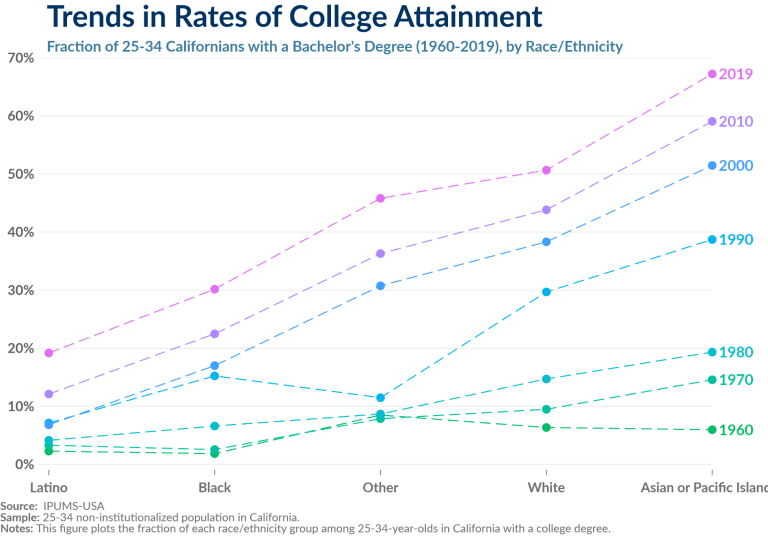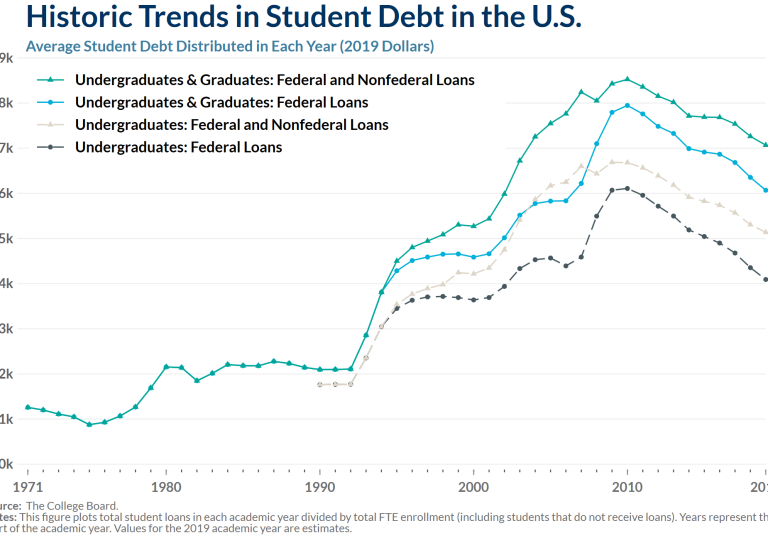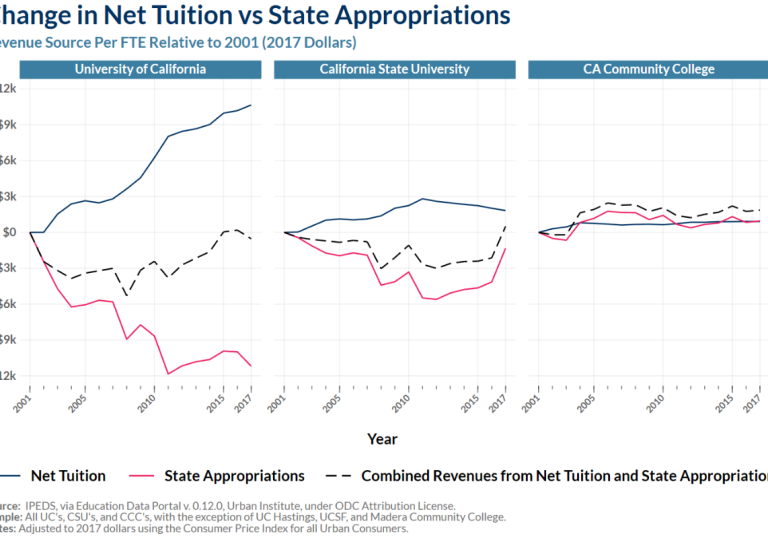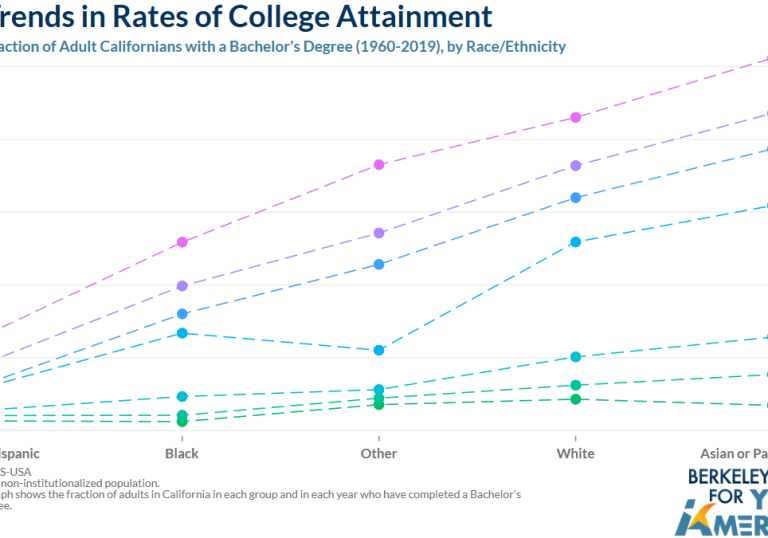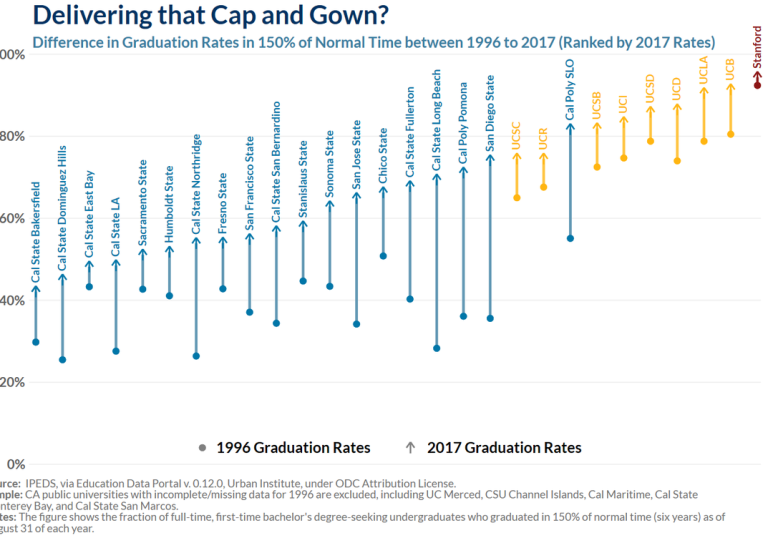Summary
Millennials are on track to become the most educated generation in the coming years. Educational attainment has increased among young adults in almost every successive business cycle in the last six decades. While about 17.6% of 29-year-olds had at least Bachelor’s degree in the early 1970’s, about 35.3% of 29-year-olds had at least a Bachelor’s degree in the past decade. This issue brief documents the changes in college attainment over time for the U.S. population by age and by generation. We report the college attainment rate for each age group or generation (“percent with a college degree”).
- Millennials will likely have the highest college attainment rate in the coming years. While Gen Xers still have the highest rate of college completion in 2018, some Millennials are still in their prime college completion ages (a Millennial born in 1996 was 22 in 2018). Using the raw number (population) of individuals with a degree, Millennials surpassed Gen X as the generation with the most college graduates as of 2018.
- College attainment rapidly and predictably rises when the youngest of each generation enters their early 20’s. College attainment continues to grow rapidly until the last members of a generation are past their prime college-going years.
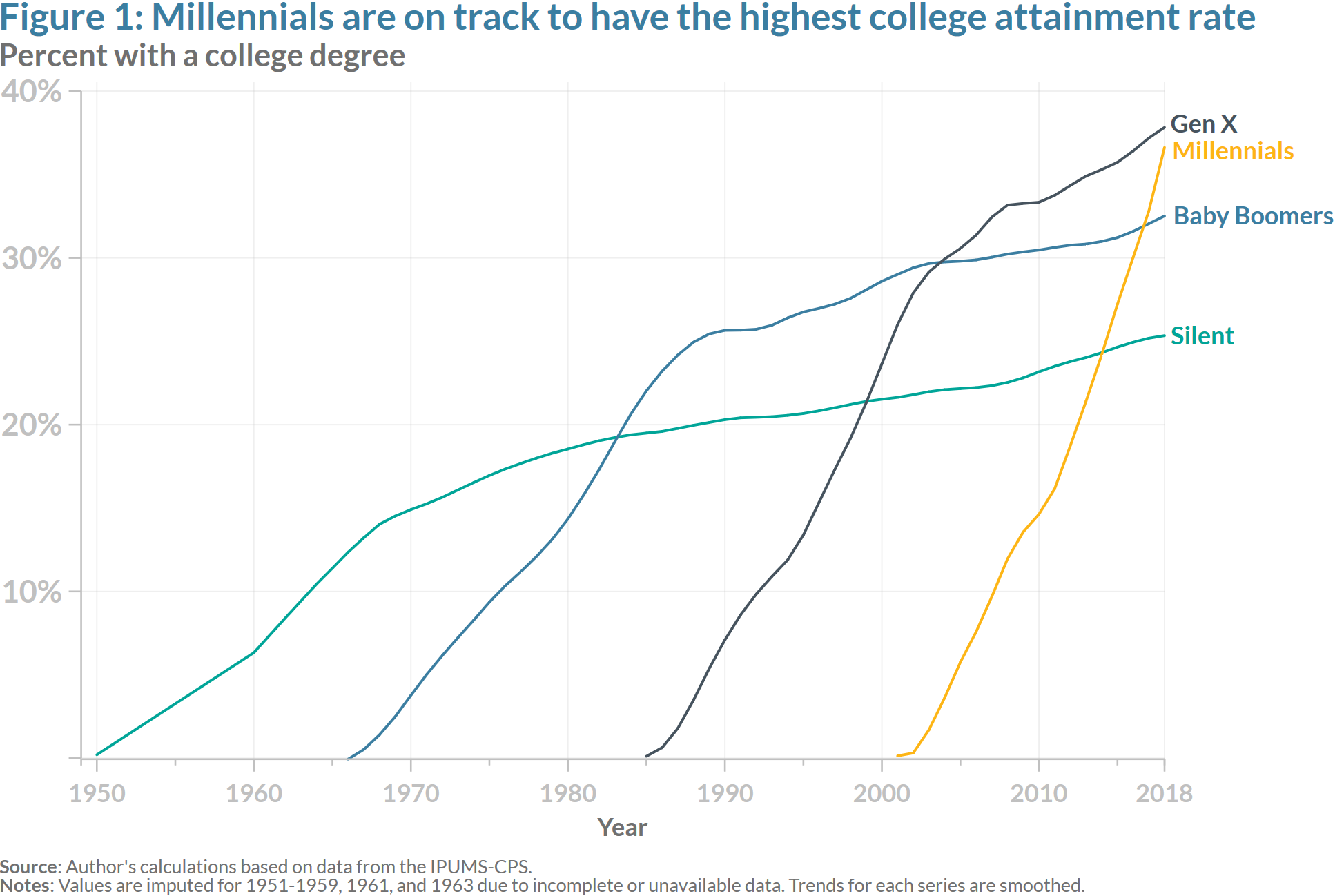
- College attainment among 25-29-year-olds has increased over almost every business cycle since the early 1970’s. With the exception of 1980-1990, 25-29-year-olds in each business cycle are more educated than the last. For instance, about 35.3% of 29-year-olds in 2008-2018 had a college degree, compared to approximately 17.6% in 1970-1973. Since this college attainment measure is based on the rate of college completion and not raw count of college degrees, the comparison across time accounts for the total population in each age group.
- College attainment rates generally fall with older ages within each business cycle. In 2008-2018, seniors were less likely to have completed college than young adults. For seniors today, the rate of college completion in their prime college-going years (pre-1980) was lower than it is for young adults today.
- College degrees among 16-19-year-olds are virtually non-existent in all cycles. Yet, there seems to be a small uptick of college degrees in this age range over time.6
- College attainment rapidly increases between 21- and 24-year-olds. On average, the rate of college attainment is 9.2 percentage points higher for every year of age between 21- to 24-year-olds. This compares to an average increase of 7.7 percentage points in 2002-2007 and 5.3 percentage points in 1970-1973 within this age range.


